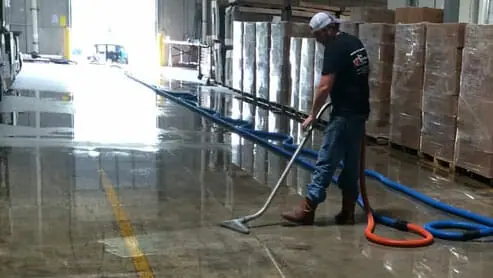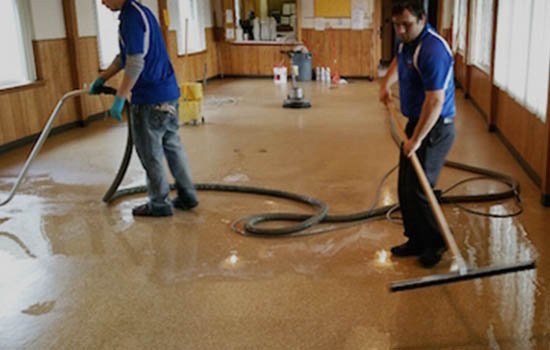We’ve all heard the stories: a friend returns home from vacation to discover their home flooded due to a busted pipe, or a relative witnesses their basement filled with water during a particularly wet storm. Water may enter properties in various ways, but it always leaves the distasteful chore of cleaning up. You could be gazing at puddles and thinking, “What now?” after you’ve disconnected the water and electricity. It’s now time to examine and repair the water damage—and do it promptly! After around 24 hours, wet materials begin to create significant issues such as mold. You can’t afford to waste any time. Choosing the best course of action for water damage may be aggravating and challenging. We’ve detailed six strategies to eliminate and repair water damage in your home to make the water damage restorations process go more smoothly.
Find A Water Source
A home is likely to have three different types of water flowing through it at any given moment. The first is known as pure water. Because it comes from rain and leaking pipes, this water is the easiest for homeowners to clean. The next kind of water is gray water. It comes from toilets, dishwashers, and washing machines, among other things. Pollutants may be present in this water, making complete cleaning more difficult.
Blackwater is the last sort of water you may encounter following a water leak. It is contaminated by sewage and other contaminants. This filthy water is most likely from a neighboring river. We do not advise repairing water damage produced by black water since it may include pollutants and bacteria that are potentially dangerous.
Locate A Dry Spot As Quickly As Possible
When dealing with water damage in the home, it’s essential to act promptly. Mold and mildew may grow if the water is allowed to stand for longer than 24 hours. Remove as much of the affected area as possible, including furniture, and set fans to dry up the damp floors and walls. If the water damage is severe, you may need to rent some industrial-strength fans to thoroughly dry the area or contact a restoration company water damage.
Look For Wetness That Has Been Concealed
We recommend checking your home once everything has been pulled from the enclosure and fans have been switched on to begin the drying process to determine if any hidden areas require water damage repair. Check for water under the floors and in the padding underneath the carpet to check whether it has gotten into these areas. If this is the case, make sure fans are placed on the affected regions to dry everything.

Check For Mold
Once everything is dry, check for water damage in your home to see whether mold has started to form. If mold is discovered, proceed with caution. Some types of mold can poison humans. If the mold issue is minimal, you might well be able to fix the water damage yourself. A competent plumber, on the other hand, should deal with an invasive mold infestation.
Drywall And Other Porous Materials Should Be Taken Down
If you discover water damage to your house’s wood, carpet, walls, or other porous materials, you must remove and replace them. By drying out select areas of carpet or wood that do not require extensive water damage repair as soon as possible, you may be able to save them.
Sanitize The Area
Take the time to thoroughly clean the areas affected by your water damage repair efforts to ensure that germs and mold have been eradicated. A simple bleach solution should be sufficient. Guarantee that any objects in the affected area have been disinfected to ensure that any bacteria or mold has been removed.
Don’t hesitate to act if a broken pipe or appliance leak has caused extensive water damage in your house. Make a call to your local water restoration company. The crew of qualified plumbers can handle anything from cracked sewage lines to faulty sump pumps to damaged water pipes in the name of emergency water damage services. Water damage repair specialists must be extremely meticulous when removing water-damaged components from a property. Likewise, before signing off on the project, they must ensure that the structure is clear of excess moisture and moisture infiltration sources.
If any extra moisture is left behind, it might lead to severe structural damage or mold growth. This can result in health hazards, angry clients, and call-backs, all of which can hurt a restoration company’s financial line and reputation.
Extensive water damage repairs in your home are not something you should (or should) do on your own. Consult with your homeowner’s insurance carrier and find out your alternatives for assistance on water damage restoration services. At every step, work with your insurance carrier to ensure that your house is safe, secure, and clean.





